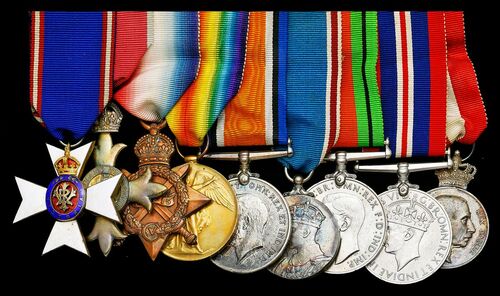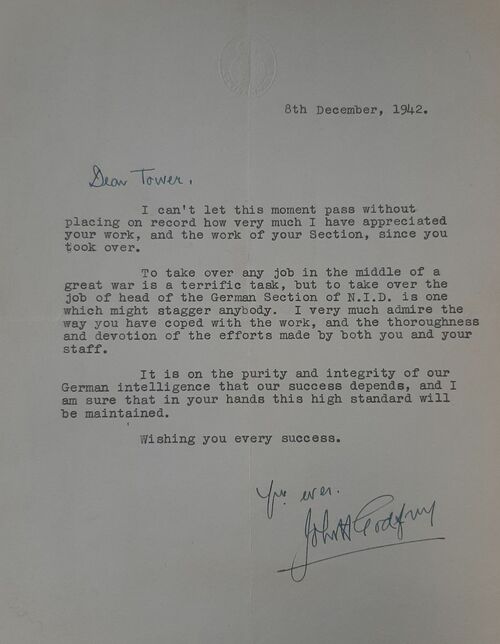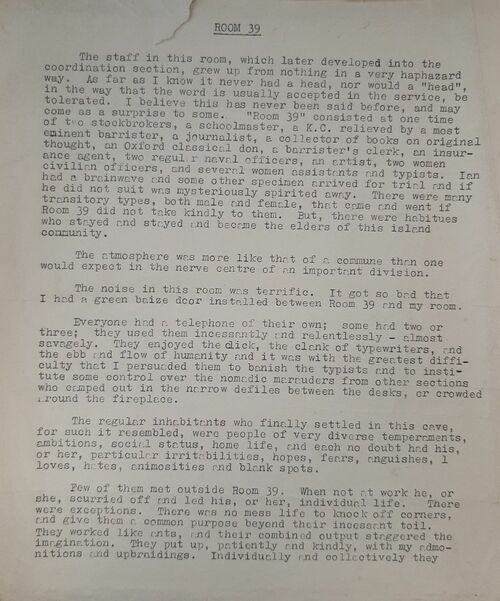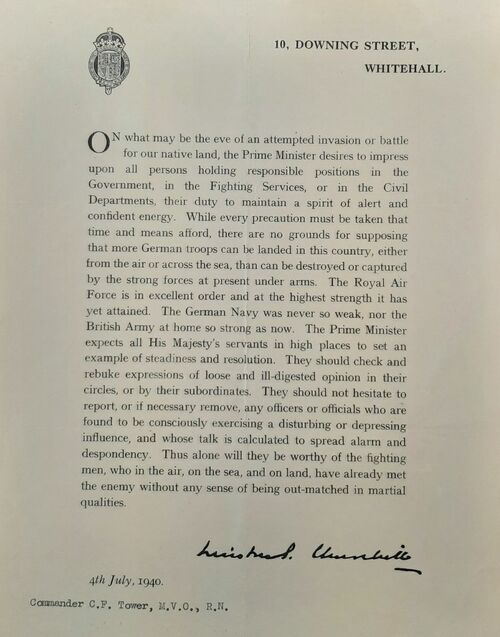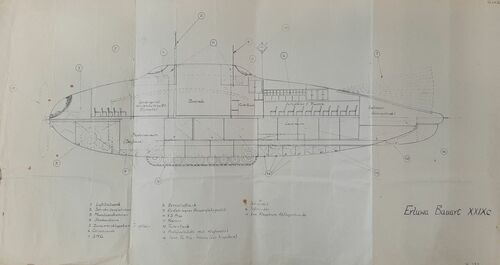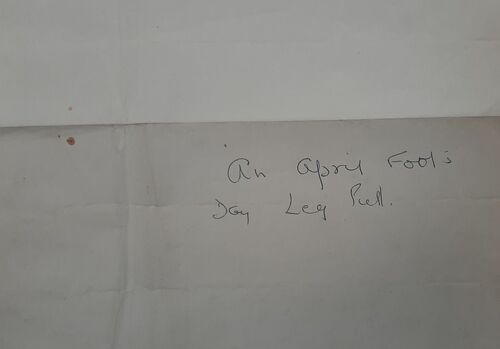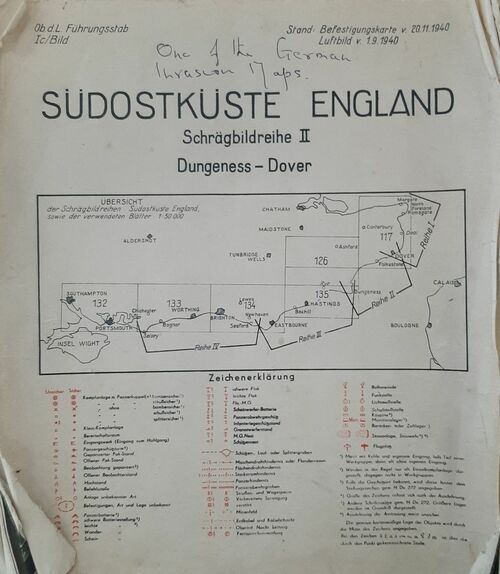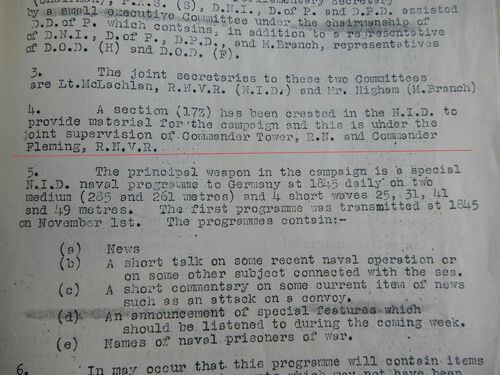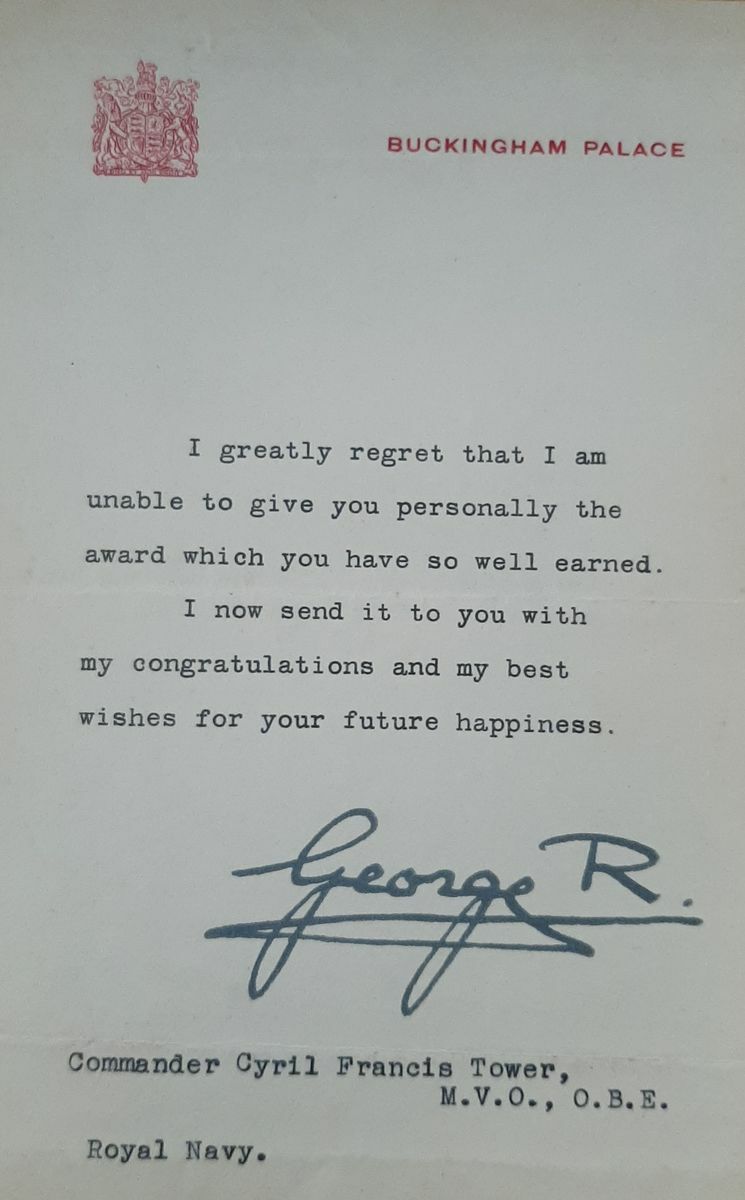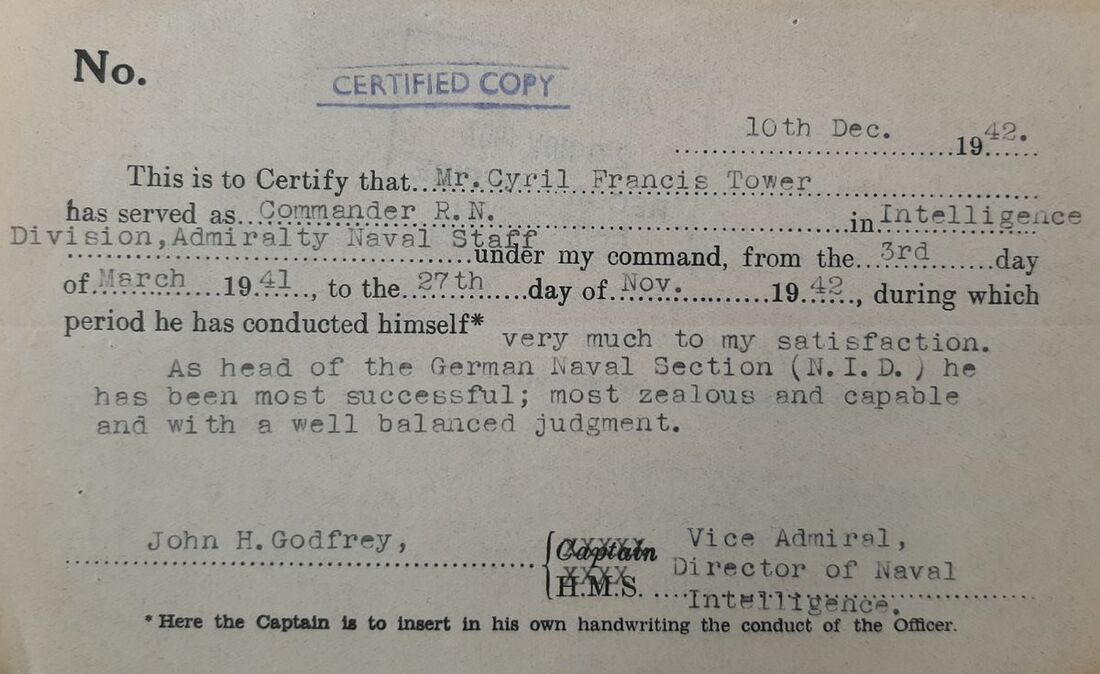Auction: 23002 - Orders, Decorations and Medals
Lot: 78
The superb and well-documented 'Division of Naval Intelligence - Head of German Section' M.V.O., O.B.E. group of nine awarded to Commander C. F. Tower, Royal Navy, whose department was responsible for gathering intelligence on the defences of North-Western Europe, keeping track of the German Navy and maintaining the integrity of Britain's Naval Intelligence
A remarkable list of assignments for one man to co-ordinate, additionally he even found the time to create an entirely new Section devoted to 'Black Propaganda' alongside none other than Lieutenant-Commander Ian Fleming
Royal Victorian Order, Member's breast Badge, silver-gilt and enamel, officially numbered '1190' to the reverse; The Most Excellent Order of the British Empire, O.B.E. (Military), Officer's 2nd Type breast Badge, silver-gilt; 1914-15 Star (Mid. C. F. Tower. R.N.); British War and Victory Medals (S. Lt. C. F. Tower. R.N.); Coronation 1937; Defence and War Medals 1939-45; Denmark, Kingdom, King Christian X's Freedom Medal, minor enamel chipping to first, overall good very fine (9)
M.V.O. London Gazette 1 January 1934.
O.B.E. London Gazette 1 January 1917.
Purchased privately from the family by the present owner and therefore offered at public Auction for the first occasion.
Cyril Francis Tower was born at Chatham, Kent on 15 July 1898, the son of Ellen and Lieutenant Cyril Tower - later Admiral Tower, D.S.O. Young Tower was educated at Forest Row School, Sussex and was appointed Midshipman on 2 August 1914 having been part of the training establishment since 1911.
The Great War
Tower's training was interrupted by the outbreak of the Great War and a posting to H.M.S. Vindictive, at that time part of the 9th Cruiser Squadron. This vessel had an active start to the war, pursuing German merchant shipping and capturing the Schlesien on 8 August followed by Slawentzitz on 9 September. Tower was present for both of these occasions before removing to the Emperor of India on 9 November 1914.
This battleship saw relatively little service throughout the war, missing out on the battles of Dogger Bank and Jutland. Despite this, Tower was promoted Sub-Lieutenant with her on 15 January 1917 before going ashore on 19 March 1917. Here he saw a variety of roles and courses including time in the Torpedo Operating Room at H.M.S. Vernon and courses at the Royal Military College Sandhurst and the University of Cambridge.
Inter-War
Returning to sea for the first time since the war, Tower was promoted Lieutenant on 15 April 1919 and posted to the minelayer H.M.S. Heythrop. The next year he joined Canterbury, newly-returned from the Black Sea and stationed with the Plymouth Gunnery School. From there he arrived at Royal Sovereign in September 1922, remaining with her for several years during which she was stationed with the Atlantic Fleet. Going ashore in 1924 Tower was to remain there until promotion to Lieutenant-Commander on 15 April 1927.
Joining the Staff of Pembroke for training duties he served there for several years before returning to sea aboard the sloop H.M.S. Heather. He was not to be with her long, shortly afterward transferring to his first command - the destroyer H.M.S. Vanessa, a position he held between 12 June 1930 – 2 May 1932 before moving on to H.M.S. Sutton. Promoted Commander on 31 December 1933, it was with this rank that he was posted to the Naval Intelligence Division's 'French Section', on 8 January 1935.
Tower was not to remain at the N.I.D., but instead returned to sea with H.M.S. Faulknor on 28 July 1938. When war broke out he removed to command the destroyer Hero- later of Narvik fame - while she was still with the Mediterranean Fleet. This appointment did not last long and Tower moved on to Proserpine, on the staff of the Assistant Chief of the Defence Staff.
Head of N.I.D.
From here he joined the Naval Intelligence Division, being appointed Head of the German Section on 3 March 1941. The unit handled a number of different duties, notably keeping track of German ship building and naval personnel, and studying coastal defences. One of his first acts here was related to the latter point - a concern with the way in which N.I.D. mapping might contain a fundamental error which would affect combined operations. British mapping of the French coast originated from a number of sources, both British and French, as well as photographs. These, when put together, did not totally match up - a small issue but one that could prove disastrous during a military operation.
Given the sphere of operations Tower was responsible for, it should not be surprising that he had a role in Combined Operations. To this end he authored a paper on intelligence-sharing within the N.I.D. for the purposes of Combined Operations. This outlined where information was received from - including N.I.D. departments and S.O.E. sources in the field - as well as who it could be provided to within the C.C.O. command structure and at what time.
The post also required Tower's input on intelligence gathering and sharing in a broader setting. Notably, he was involved in the distribution of Ultra intercepts and on at least one occasion expressed dissatisfaction with the way in which pertinent information was being withheld from his department. With one report in the Bletchley Park files stating:
'Officers responsible in Admiralty for these types of intelligence were also perturbed. Commander Tower, Head of N.I.D. 1 was "very dissatisfied with the way that information does not get to the people who can take action on it", and it was largely on the strength of his recommendation that D.N.I. (Director of Naval Intelligence) wrote to Mr. Birch on 27th July
It should not be forgotten that for all the inter-divisional politics and departmental oversight, Tower's role remained at least in part that of a spymaster. Nowhere is this more evident than in an Admiralty memo entitled 'Indications of possible German penetration of "C's" organisation'. This concerned an MI6 intelligence ring operating in France - 'C' being Sir Stewart Menzies, at the time Head of SIS. The memo goes into greater detail, stating:
'ISOS 60089 revealed that the Germans were asking whether there was any truth in the report that we were going to bomb their pocket-submarine going through Auxerre. At the same time we were getting many CX-reports that Auxerre was a vital point in the transport by road and canal of pocket submarines, and suggesting that it might be a good thing to bomb them. Commander Tower of Section 1 linked these two matters together and Section 12 suggested to "C" that the enquiry might be the result of the Germans knowing of these reports.'
Tower's work even took him into the world of propaganda, where he found himself working side by side with Lieutenant-Commander Ian Fleming on the creation of N.I.D. 17z sub-department. This unit handled the creation of 'Black Propaganda' - items intended to appear as if they came from legitimate German sources which were meant to create discontent amongst the enemy. It is likely the two cooperated on a number of projects given Fleming's role as assistant to the D.N.I. and Tower's association with combined operations in North-West Europe.
Tower's role during the war is perhaps best summed-up in a letter sent to him by Admiral John Godfrey (until 1942 the Director of Naval Intelligence) upon leaving his position which states:
'I can't let this moment pass without placing on record how very much I have appreciated your work, and the work of your Section, since you took over.
To take over any job in the middle of a great war is a terrific task, but to take over the job of head of the German Section of N.I.D. is one which might stagger anybody. I very much admire the way you have coped with the work, and the thoroughness and devotion of the efforts made by both you and your staff.
It is on the purity and integrity of our German intelligence that our success depends, and I am sure that in your hands this high standard will be maintained.'
With the end of the war Tower continued in his position in the N.I.D. becoming increasingly important within the organisation. When the Deputy Director of Naval Intelligence stepped down in 1945 he was replaced by several stand-ins, with Tower assuming the role on 12 September 1946. He remained in this post with the acting rank of Captain until 13 September 1947. Stepping down, he undertook staff work for the better part of a year; Tower finally retired on 11 September 1948 having reverted to the rank of Commander. Sold together with copied reports and memos from Bletchley Park and Admiralty Records relating to the recipient's work with the N.I.D. as well as an archive of original material comprising:
i)
A brief description of Room 39 named to a 'Morris Jones'
ii)
Letter from the recipient to his father.
iii)
Letter from Admiral Godfrey, D.N.I., sent upon his retirement in 1942.
iv)
Telegrams confirming the recipient's appointments between 3 August 1914-19 September 1947.
v)
Named speech send from Downing Street on 4 July 1940 to all senior officers.
vi)
H.M.S. Vanessa souvenir booklet, with the recipient listed first as officer commanding on the inside cover.
vii)
Fake Technical drawings for a German War Machine believed to have been given to the recipient by Ian Fleming as an April Fools prank, the reverse annotated 'an April Fools Day Leg Pull'.
viii)
German invasion map annotated 'One of the German Invasion Maps' on the front cover.
ix)
A letter addressed to the recipient from 'Albert P. Hinckley'.
x)
Named slip of issue.
Subject to 20% VAT on Buyer’s Premium. For more information please view Terms and Conditions for Buyers.
Sold for
£3,000
Starting price
£3000

